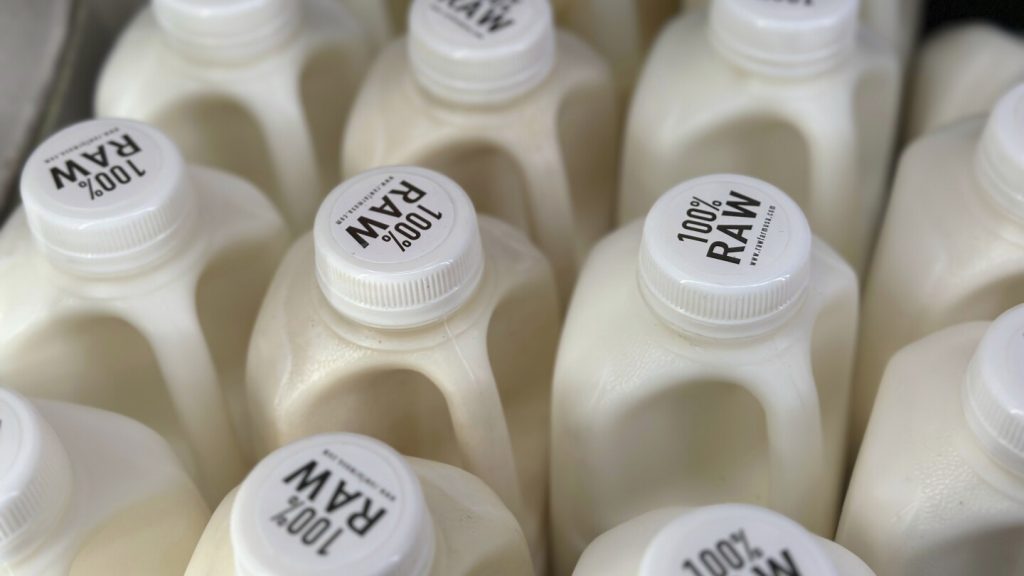Sales of raw milk have been increasing despite warnings about the health risks of consuming unpasteurized products, as well as an outbreak of bird flu in dairy cows. Since the confirmation of the virus in U.S. cattle on March 25, sales of raw cow’s milk have seen an increase of up to 65% compared to the same period a year ago, according to market research firm NielsenIQ. The Food and Drug Administration and the Centers for Disease Control and Prevention have warned about the dangers of raw milk, citing it as one of the riskiest foods to consume due to potential contamination with harmful germs that can cause illness.
The bird flu virus has been found in high levels in the raw milk of infected cows, with viral remnants also detected in samples of milk sold in grocery stores. However, the FDA has stated that pasteurization can kill the virus, making the products safe for consumption. While it’s unclear if consuming raw milk can transmit live virus to people, CDC officials have warned of potential risks if the virus comes in contact with receptors in the nose, mouth, throat, or lungs of individuals. There is concern that increased exposure to the virus could lead to mutations that make it more transmissible among people.
There are varying regulations regarding the sale of raw milk across states, with some permitting retail sales in stores while others restrict it to farm sales. Some states allow arrangements like cowshares, where individuals pay for milk from specific animals, while others limit consumption to farm owners, employees, or non-paying guests. Despite the increase in raw milk sales, these products still represent a small fraction of overall dairy sales, as reported by NielsenIQ. The trend of people seeking raw milk has been observed on social media platforms, with some disregarding FDA warnings and opting for unpasteurized products instead.
Consumption of raw milk has been associated with outbreaks of illnesses caused by dangerous bacteria such as campylobacter, listeria, salmonella, and E. coli. Research indicates that raw milk is more likely to lead to illnesses and hospitalizations compared to pasteurized milk. Despite the risks, a significant number of U.S. adults continue to consume raw milk, with some citing perceived health benefits and lack of additives as reasons for their preference. The rejection of expert advice and mistrust of government officials play a role in the popularity of raw milk consumption among certain individuals.
Experts express concern over the rising popularity of raw milk and emphasize the importance of understanding why people choose to consume it. Communicators are urged to engage with consumers and counter misinformation by promoting the benefits of pasteurized milk through social media platforms. Efforts to address the trend of raw milk consumption should consider the underlying motivations of consumers and aim to provide accurate information to educate the public. The Associated Press Health and Science Department is committed to providing reliable and informative content on health-related topics, supported by the Howard Hughes Medical Institute’s Science and Educational Media Group.


